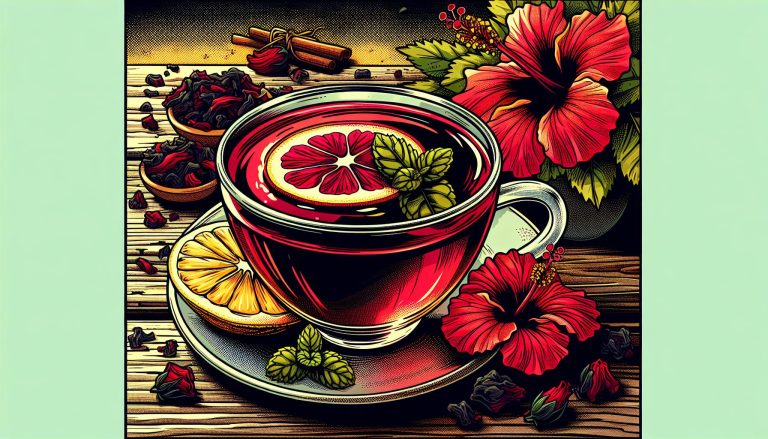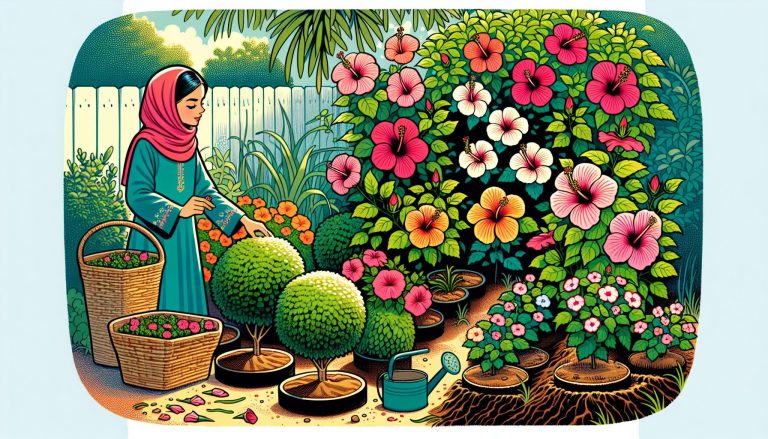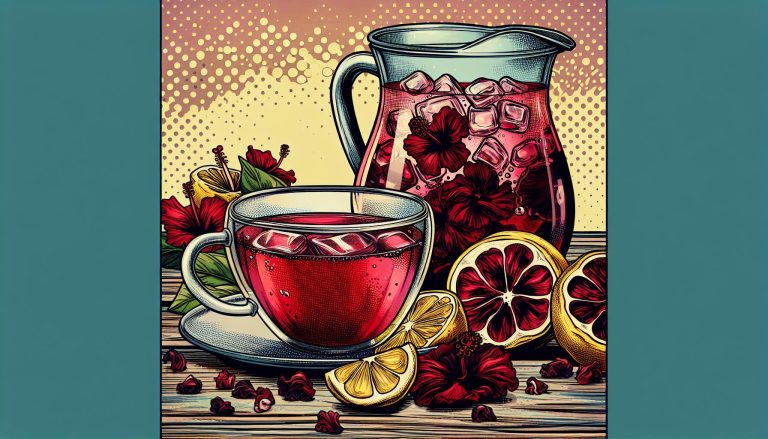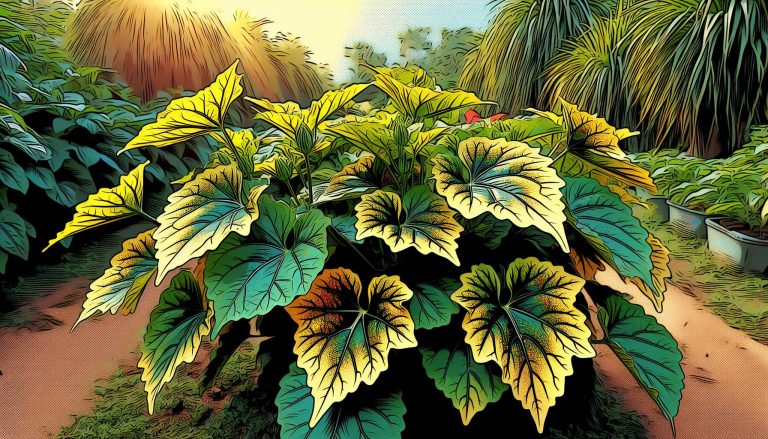Hibiscus and Dogs: Is This Beautiful Bloom Dangerous for Your Pup?
As a dog owner, I’m always on the lookout for potential hazards in my garden. Recently, I found myself wondering about the safety of hibiscus plants for our furry friends. These vibrant, tropical flowers are a popular choice for many home gardens, but are they safe for our canine companions?
I’ve decided to dive deep into this topic to provide fellow pet parents with accurate information. In this article, I’ll explore whether hibiscus plants pose any risks to dogs, what symptoms to watch out for if your pup ingests them, and how to create a pet-friendly garden without sacrificing beauty. Let’s uncover the truth about hibiscus and keep our four-legged friends safe and healthy.
Understanding Hibiscus Plants
Hibiscus plants are popular ornamental flowers known for their vibrant, showy blooms. I’ve researched various types of hibiscus to better understand their characteristics and potential effects on dogs.
Common Types of Hibiscus
Hibiscus plants come in numerous varieties, each with distinct features:
- Tropical Hibiscus (Hibiscus rosa-sinensis): Large, colorful flowers in shades of red, pink, orange, yellow, and white
- Hardy Hibiscus (Hibiscus moscheutos): Native to North America, with dinner plate-sized blooms
- Rose of Sharon (Hibiscus syriacus): Shrub-like plant with smaller flowers, often used in hedges
- Chinese Hibiscus (Hibiscus rosa-sinensis): Popular houseplant with glossy leaves and trumpet-shaped flowers
- Confederate Rose (Hibiscus mutabilis): Flowers change color throughout the day, from white to pink to red
Hibiscus in Home Gardens
Hibiscus plants are versatile additions to home gardens:
- Landscaping: Used as focal points, hedges, or border plants
- Container gardening: Ideal for patios, decks, and small spaces
- Indoor plants: Tropical varieties thrive as houseplants in bright, indirect light
- Attract pollinators: Flowers draw bees, butterflies, and hummingbirds
- Low maintenance: Many varieties are drought-tolerant and require minimal care
When incorporating hibiscus in gardens, I consider factors like climate, soil type, and sun exposure to ensure optimal growth and blooming.
Potential Dangers of Hibiscus for Dogs

While hibiscus plants add beauty to gardens, they pose potential risks to our canine companions. I’ve researched the specific components that make hibiscus dangerous for dogs and the symptoms that may occur if ingested.
Toxic Components in Hibiscus
Hibiscus plants contain several compounds that can be harmful to dogs:
- Cyanogenic glycosides: These substances release cyanide when metabolized, potentially causing cellular oxygen deprivation.
- Saponins: These soap-like compounds can irritate the gastrointestinal tract and lead to vomiting and diarrhea.
- Tannins: These astringent compounds may cause digestive upset and liver damage in large quantities.
- Asparagine: This amino acid, found in higher concentrations in hibiscus, can cause vomiting and diarrhea in dogs.
- Gastrointestinal distress: Vomiting, diarrhea, and abdominal pain are common initial signs.
- Loss of appetite: Dogs may refuse food or water due to nausea.
- Lethargy: Affected dogs often appear tired or lack energy.
- Drooling: Excessive salivation can occur due to mouth irritation.
- Difficulty swallowing: Inflammation of the throat may cause swallowing issues.
- Skin irritation: Contact with hibiscus sap can lead to redness, itching, or rashes.
- Tremors or seizures: In severe cases, neurological symptoms may develop.
Are All Hibiscus Species Equally Toxic?
Not all hibiscus species pose the same level of risk to dogs. While some varieties are more toxic than others, it’s crucial to understand the differences to ensure your canine companion’s safety.
Safe vs. Dangerous Hibiscus Varieties
I’ve researched various hibiscus species to identify which ones are safer for dogs and which pose a higher risk. Here’s a breakdown of common hibiscus varieties and their toxicity levels:
- Rose of Sharon (Hibiscus syriacus): Considered mildly toxic to dogs. Ingestion may cause gastrointestinal upset.
- Tropical Hibiscus (Hibiscus rosa-sinensis): Generally less toxic but can still cause mild symptoms if ingested in large quantities.
- Hardy Hibiscus (Hibiscus moscheutos): Typically less toxic than other varieties, but caution is still advised.
- Chinese Hibiscus (Hibiscus rosa-sinensis): Similar toxicity level to Tropical Hibiscus.
- Confederate Rose (Hibiscus mutabilis): Potentially more toxic than other varieties, with a higher risk of adverse effects.
It’s important to note that while some varieties are considered less toxic, no hibiscus species is completely safe for dogs to consume. Always monitor your pet around any hibiscus plants in your garden.
What to Do If Your Dog Eats Hibiscus
Immediate Steps to Take
- Remove the plant: Take the hibiscus away from your dog to prevent further ingestion.
- Assess the amount: Determine how much of the plant your dog has consumed.
- Check for symptoms: Look for signs of distress, such as vomiting, diarrhea, or lethargy.
- Rinse the mouth: Gently flush your dog’s mouth with water to remove any remaining plant material.
- Preserve evidence: Keep a sample of the plant for identification if needed by a veterinarian.
- Monitor closely: Watch your dog for any changes in behavior or health over the next few hours.
- Large ingestion: Call immediately if your dog has eaten a significant amount of hibiscus.
- Severe symptoms: Seek help if you notice intense vomiting, diarrhea, or signs of pain.
- Allergic reactions: Contact a vet if you observe swelling, difficulty breathing, or excessive drooling.
- Persistent mild symptoms: Reach out if mild symptoms last more than 24 hours.
- Pre-existing conditions: Consult a vet if your dog has other health issues that may be affected.
- Uncertainty: When in doubt about your dog’s condition, it’s always best to call your veterinarian for advice.
Preventing Hibiscus Poisoning in Dogs
To protect our canine companions from hibiscus poisoning, it’s essential to create a pet-safe garden environment and choose alternative pet-friendly plants. Here are some effective strategies to prevent hibiscus poisoning in dogs:
Creating a Pet-Safe Garden
Creating a pet-safe garden involves strategic planning and implementation of safety measures. I recommend:
- Fencing: Install secure fencing around hibiscus plants or create designated dog-free zones.
- Raised beds: Elevate hibiscus plants in raised beds to limit access.
- Supervision: Monitor dogs closely during outdoor time.
- Training: Teach dogs “leave it” commands to discourage plant interaction.
- Deterrents: Use pet-safe repellents or motion-activated sprinklers near hibiscus plants.
- Pruning: Regularly trim hibiscus plants to prevent low-hanging branches within reach.
- Clean-up: Remove fallen flowers, leaves, and stems promptly.
- Mulching: Apply pet-safe mulch around hibiscus plants to discourage digging.
- Provide alternatives: Offer dog-friendly chew toys and treats to redirect attention.
- Regular exercise: Ensure dogs receive adequate physical and mental stimulation to reduce boredom-related plant interactions.
Alternative Pet-Friendly Plants
Incorporating pet-friendly plants in your garden creates a safe environment for dogs while maintaining aesthetic appeal. Consider these non-toxic alternatives to hibiscus:
- Sunflowers: Tall, vibrant flowers that are safe for dogs.
- Marigolds: Colorful, low-growing flowers with pest-repelling properties.
- Petunias: Versatile, annual flowers available in various colors.
- Snapdragons: Tall, spiky flowers that bloom in multiple hues.
- Zinnias: Bright, daisy-like flowers that attract butterflies.
- Nasturtiums: Edible flowers with round leaves, safe for dogs.
- Roses: Classic flowers without thorns for added safety.
- Pansies: Low-growing, colorful flowers that thrive in cooler weather.
- Calendula: Vibrant orange or yellow flowers with medicinal properties.
- African Violets: Indoor-friendly, flowering plants with fuzzy leaves.
By incorporating these pet-safe plants and implementing protective measures, you’ll create a beautiful garden that’s safe for your canine companions to explore.
Conclusion
Protecting our furry friends from potential hazards is crucial for responsible pet ownership. While hibiscus plants add beauty to our gardens they can pose risks to dogs if ingested. By understanding the varying toxicity levels of different hibiscus species and recognizing symptoms of poisoning we can take swift action if needed. Creating a pet-safe garden environment and choosing dog-friendly alternatives allows us to enjoy stunning blooms without compromising our pets’ safety. Remember it’s always best to err on the side of caution and consult a veterinarian if you suspect your dog has consumed any part of a hibiscus plant.







